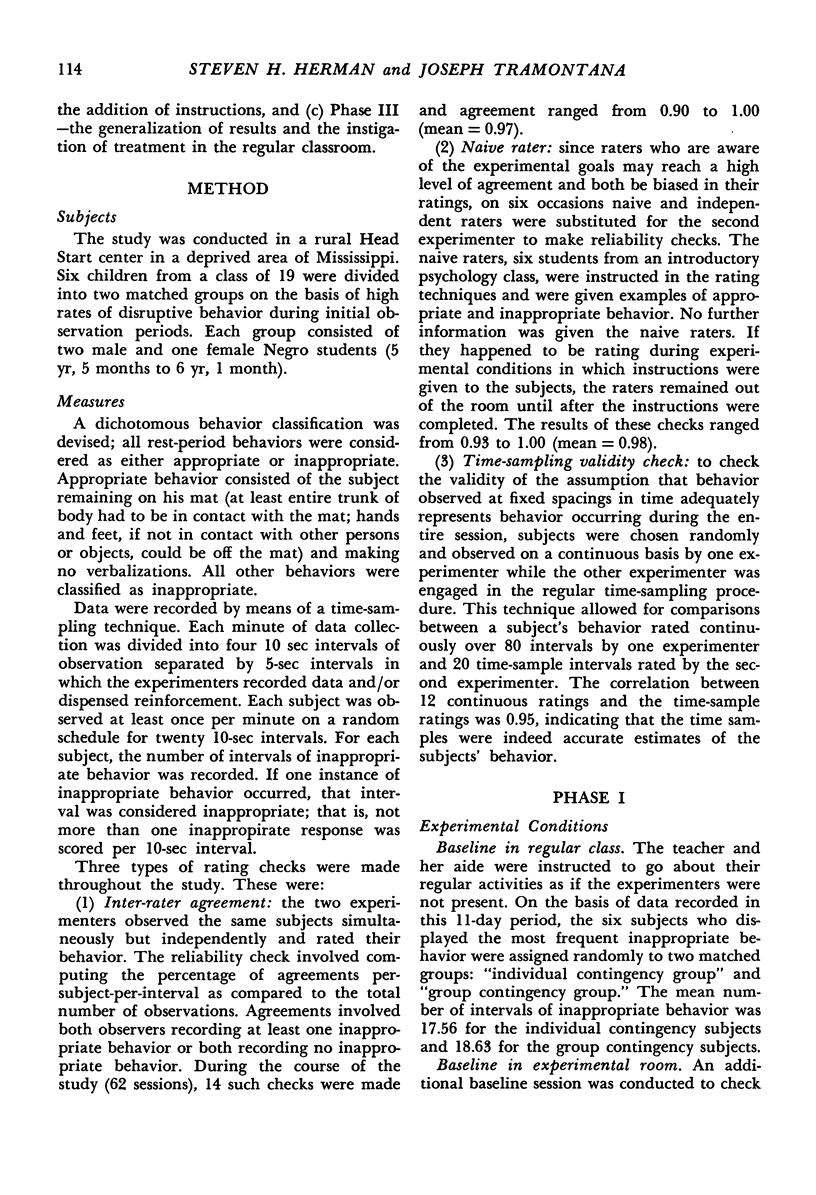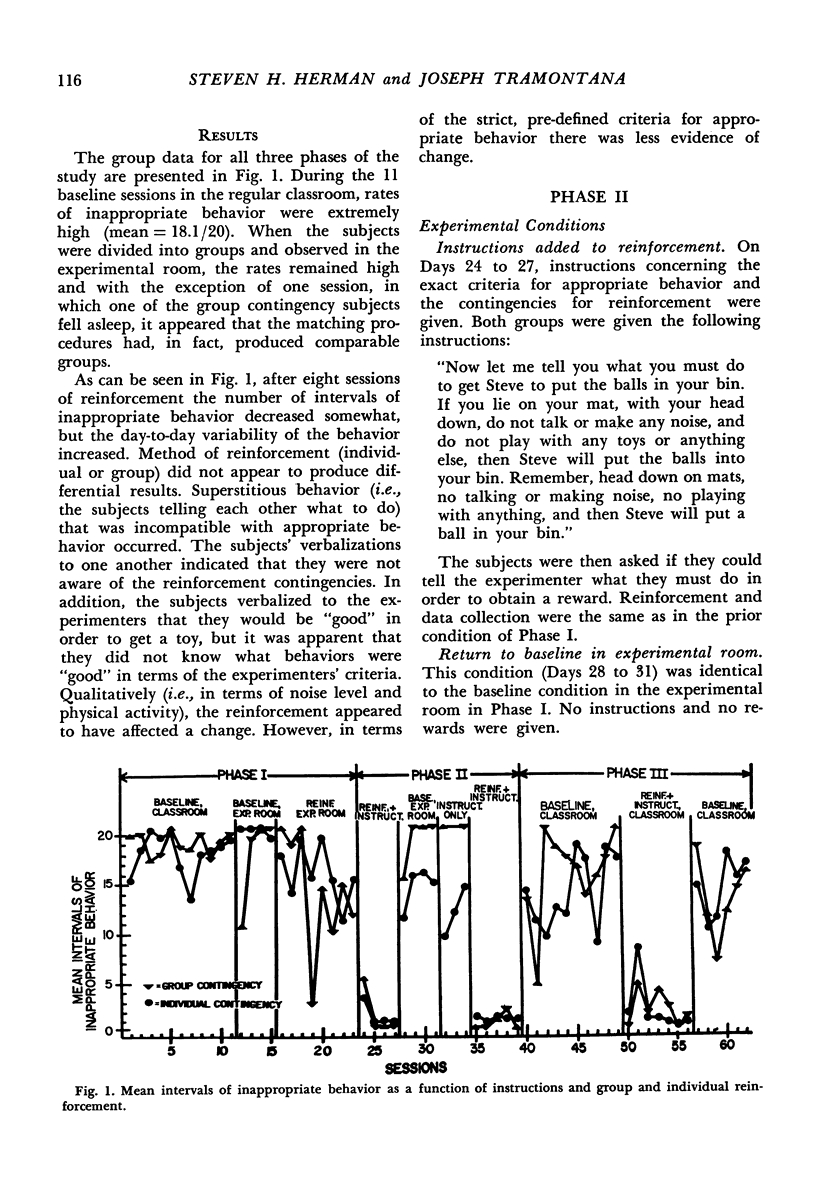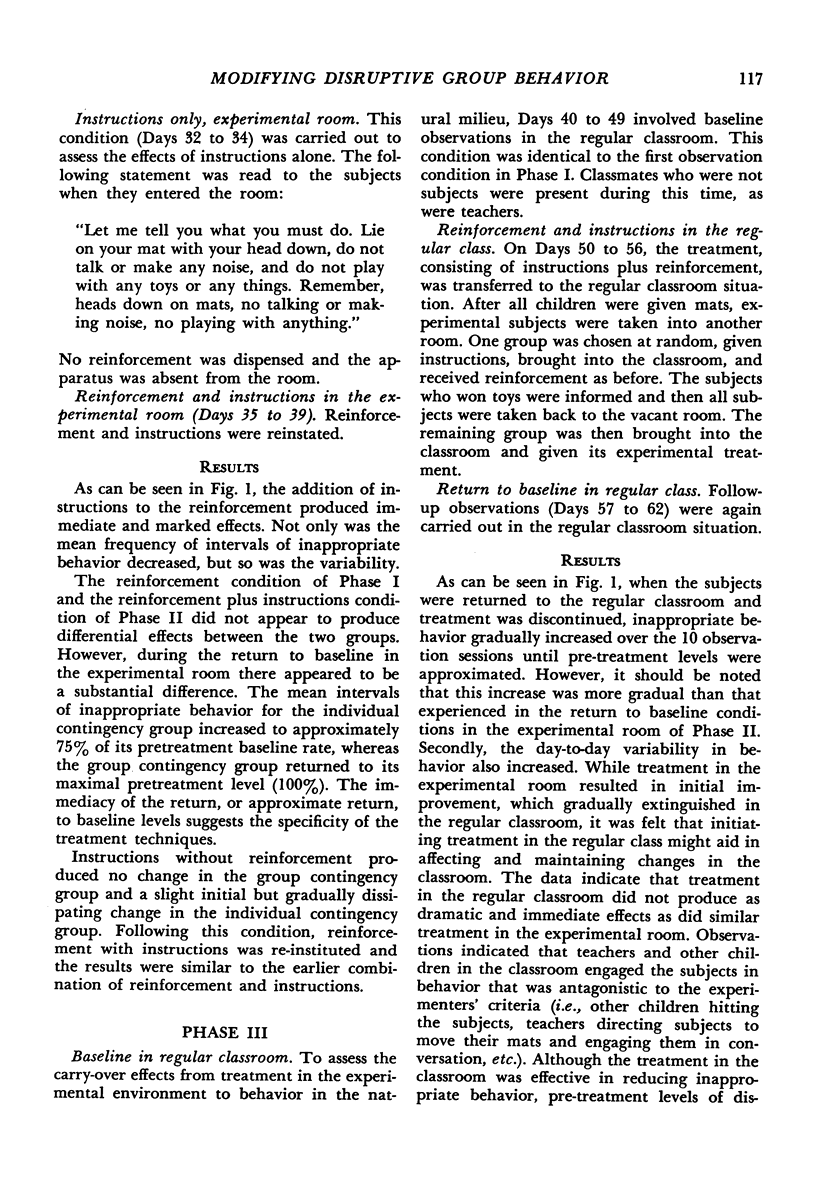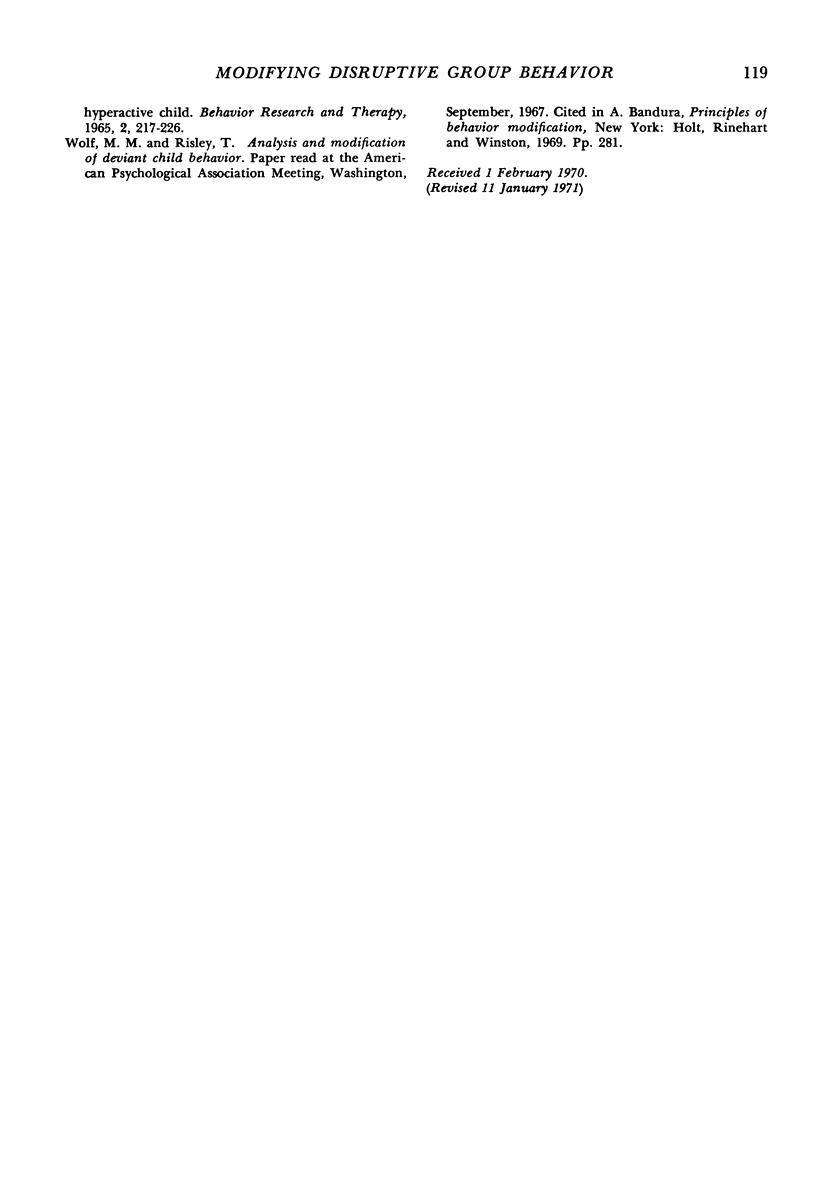Abstract
Head Start children were matched into two groups on the basis of rates of disruptive behavior during rest periods. Attempts were made to modify their behavior using either individual or group token reinforcement procedures. While the reinforcement procedures reduced inappropriate behavior somewhat, the addition of instructions to the reinforcement reduced the inappropriate behavior to near zero for both groups. Instructions alone, however, were ineffective in controlling behavior. Type of reinforcement (group or individual) did not produce differential effects. While experimental control over the target behavior was demonstrated, there was little carryover from the experimental room to the regular classroom. Even when treatment was introduced into the regular class, follow-up results showed that with time the target behavior approximated pretreatment levels. The results suggest that (a) the combination of instructions and reinforcement is much more effective than either one of these alone, (b) behavior change is specific to the environmental contingencies, and (c) the group reinforcement technique, which is much more easily implemented, was at least as effective as individual reinforcement in the present study.
Full text
PDF






Selected References
These references are in PubMed. This may not be the complete list of references from this article.
- AYLLON T., AZRIN N. H. REINFORCEMENT AND INSTRUCTIONS WITH MENTAL PATIENTS. J Exp Anal Behav. 1964 Jul;7:327–331. doi: 10.1901/jeab.1964.7-327. [DOI] [PMC free article] [PubMed] [Google Scholar]
- Agras S., Leitenberg H., Barlow D. H. Social reinforcement in the modification of agoraphobia. Arch Gen Psychiatry. 1968 Oct;19(4):423–427. doi: 10.1001/archpsyc.1968.01740100039006. [DOI] [PubMed] [Google Scholar]
- Baron A., Kaufman A., Stauber K. A. Effects of instructions and reinforcement-feedback on human operant behavior maintained by fixed-interval reinforcement. J Exp Anal Behav. 1969 Sep;12(5):701–712. doi: 10.1901/jeab.1969.12-701. [DOI] [PMC free article] [PubMed] [Google Scholar]
- Barrish H. H., Saunders M., Wolf M. M. Good behavior game: effects of individual contingencies for group consequences on disruptive behavior in a classroom. J Appl Behav Anal. 1969 Summer;2(2):119–124. doi: 10.1901/jaba.1969.2-119. [DOI] [PMC free article] [PubMed] [Google Scholar]
- Evans G. W., Oswalt G. L. Acceleration of academic progress through the manipulation of peer influence. Behav Res Ther. 1968 May;6(2):189–195. doi: 10.1016/0005-7967(68)90006-5. [DOI] [PubMed] [Google Scholar]
- Oliveau D. C., Agras W. S., Leitenberg H., Moore R. C., Wright D. E. Systematic desensitization, therapeutically oriented instructions and selective positive reinforcement. Behav Res Ther. 1969 Feb;7(1):27–33. doi: 10.1016/0005-7967(69)90045-x. [DOI] [PubMed] [Google Scholar]


